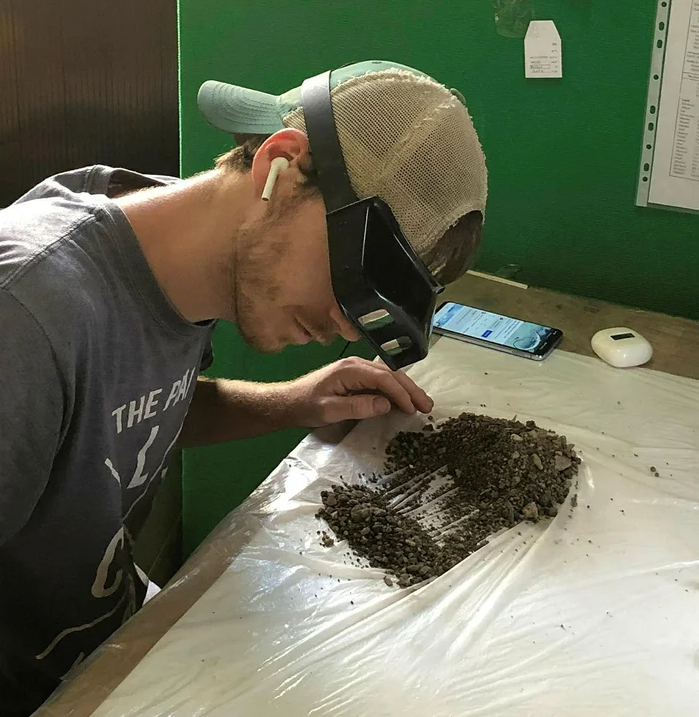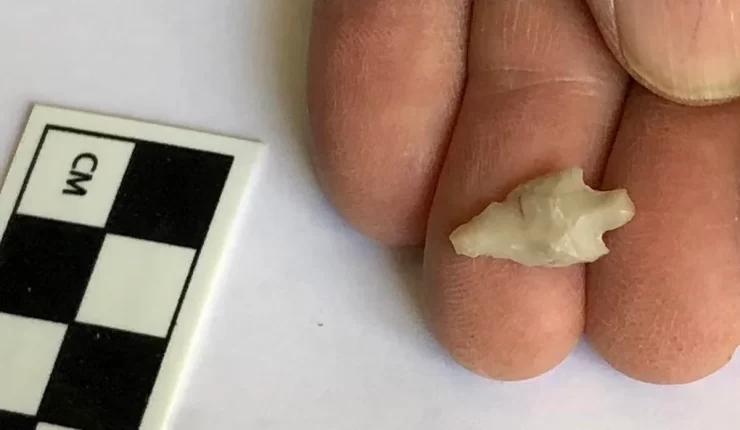An artifact from the Neolithic era, at least 7,000 years old, has been discovered in ancient Jerusalem – on Mount Zion, no less – for the first time ever, or at least for the first time since the 1920s. The object is a little, white flint arrowhead with beautiful pink veins that is roughly the size of a person’s pinkie nail.
According to Prof. Shimon Gibson of the University of North Carolina at Charlotte, it is also one of the most comprehensive artifacts of its kind ever discovered in the Old City area, measuring little more than 1.5 centimeters (approximately 0.6 inches) long. Along with professors James Tabor and Rafael Lewis, he serves as one of the project’s directors for the Mount Zion excavation (the dig is supported by the Center for the History and Archaeology of the Near East). Millions of objects found during the excavations are being sorted through by Gibson and his colleagues at the moment.
Its sole flaw is a somewhat softened tip, but its sides are still razor-sharp. However, experts digging Mount Zion guarantee Haaretz that this little weapon would have been lethal during the Neolithic period.
The teeny arrowhead was spotted by eagle-eyed North Carolina graduate student William Stumpff while using the flotation technique to weed out miniature archaeological goodies from boxfuls of soil samples excavated from the site.
Stumpff is working in the team’s university laboratory, which is near the Old City and houses hundreds of boxes of excavation artifacts ranging from soil samples to pottery sherds to the detritus of millennia of early urbanites. He has been extracting pottery and glass fragments, seeds, bones, bits of charcoal, textile fibers, eggshells, and other items from the earth. And it was he, armed with magnifying goggles, who noticed the tiny arrowhead and quickly recognized it as such, bringing it to Gibson for examination. The professor quickly recognized it as a very little Neolithic arrow tip.
The true mystery is why such Neolithic tools have never been discovered in and around Jerusalem’s Old City. In the 1920s, when digging a cave near Jerusalem’s Gihon spring in the region of the later City of David, Robert Stewart Macalister and Rev. John Garrow Duncan discovered Neolithic flint implements – but they never reported their discovery, according to Gibson.



The earliest tools discovered so far date from the late Chalcolithic period. Some tools may appear to be comparable in the Neolithic and Chalcolithic periods, but this is not the case with the arrow tip, according to Gibson. It’s Neolithic in age.
How does he know this? Typology. It resembles Neolithic arrow tips found elsewhere in Israel, and it demonstrates expert knapping, with very delicate workmanship, and the small size is noteworthy, he says.
Since at least 2 million years ago, Israel has been the breeding site for Homo sapiens. Ancient ruins may be found all across other sections of Israel, with the oldest ones discovered to date back about 1.5 million years. The data suggests that modern humans have been venturing into what is now Israel since at least 200,000 years ago.
The point being, wouldn’t one expect hominin and prehistoric human signs in Jerusalem too, especially around the Gihon spring, which would have provided a source of drinking water for humans and animals alike?
Lewis, a landscape archaeologist and the project’s co-director, believes that this is extremely probable. At the site of Motza, not far west of Jerusalem, archaeologists have been uncovering a sizable settlement from 9,000 years ago. In addition, Khirbet es-Sauma’a in northern Jerusalem has evidence of a settlement that dates back at least 7,000 years.
Gibson notes that Mount Zion has only yielded a very small number of prehistoric artifacts, the majority of which are Chalcolithic or later: stone chisels and scrapers, a few blades, but nothing really noteworthy.
If we ask, so where is the evidence for Neolithic Jerusalem? It’s because the city has been built up over 7,000 years, making it difficult for archaeologists to find remnants of previous periods.
“Anything from Neolithic times would be close to bedrock, but when we get to bedrock – the builders of subsequent periods have gotten there before us.” In other words, they needed solid foundations for their constructions on bedrock, and the first step was to sweep away any lingering cultural remnants from earlier peoples. In fact, the arrowhead was discovered in soil that had been changed about through multiple building operations over thousands of years, rather than in a Neolithic layer.
“I’d love to unearth a Neolithic layer,” Gibson says, “but that hasn’t happened yet in any excavation in the neighborhood of the Old City of Jerusalem.”
In any case, there could be additional Neolithic material in the hundreds of cardboard cartons carrying excavation items or in the dozens of soil samples waiting to be examined. We will have to wait and see.
